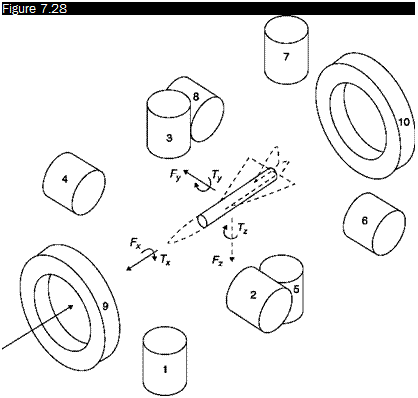Electromagnets
Electromagnets consist of coils, usually copper, wrapped tightly around a laminated core of ferromagnetic material (soft iron, steel, cobalt). Electromagnets require a refrigeration system, generally water, to dispose of heat produced by the dissipated electricity.
Each plant is characterized by its pattern of electromagnets around the test chamber and by their constructive solutions. The schema of a quite complex plant built at the Southampton University is shown in Figure 7.28: ten magnets, disposed in antagonistic pairs, ensure the
 |
Positions of magnets in a six-component balance at Southampton University, UK
symmetry along the three axes of the wind tunnel, then the system is able to control all degrees of freedom of the model. Magnets 1, 3, 5, 7 control vertical position and pitch angle, magnets 2, 4, 6, 8 control transverse position and yaw angle, while magnets 9 and 10 control the longitudinal position. The roll angle is controlled by the electromagnets from 1 to 8.











